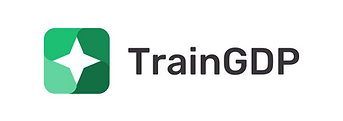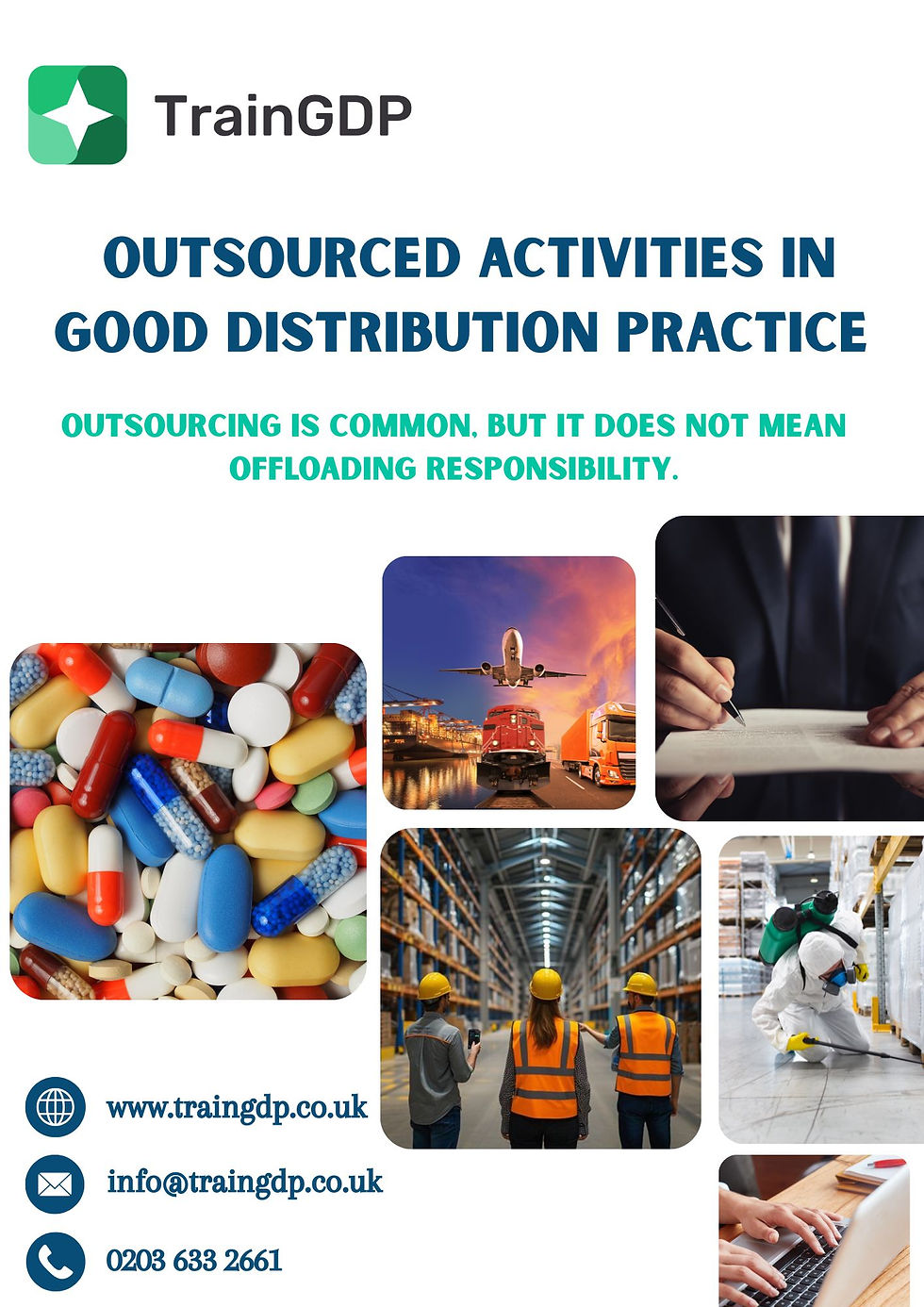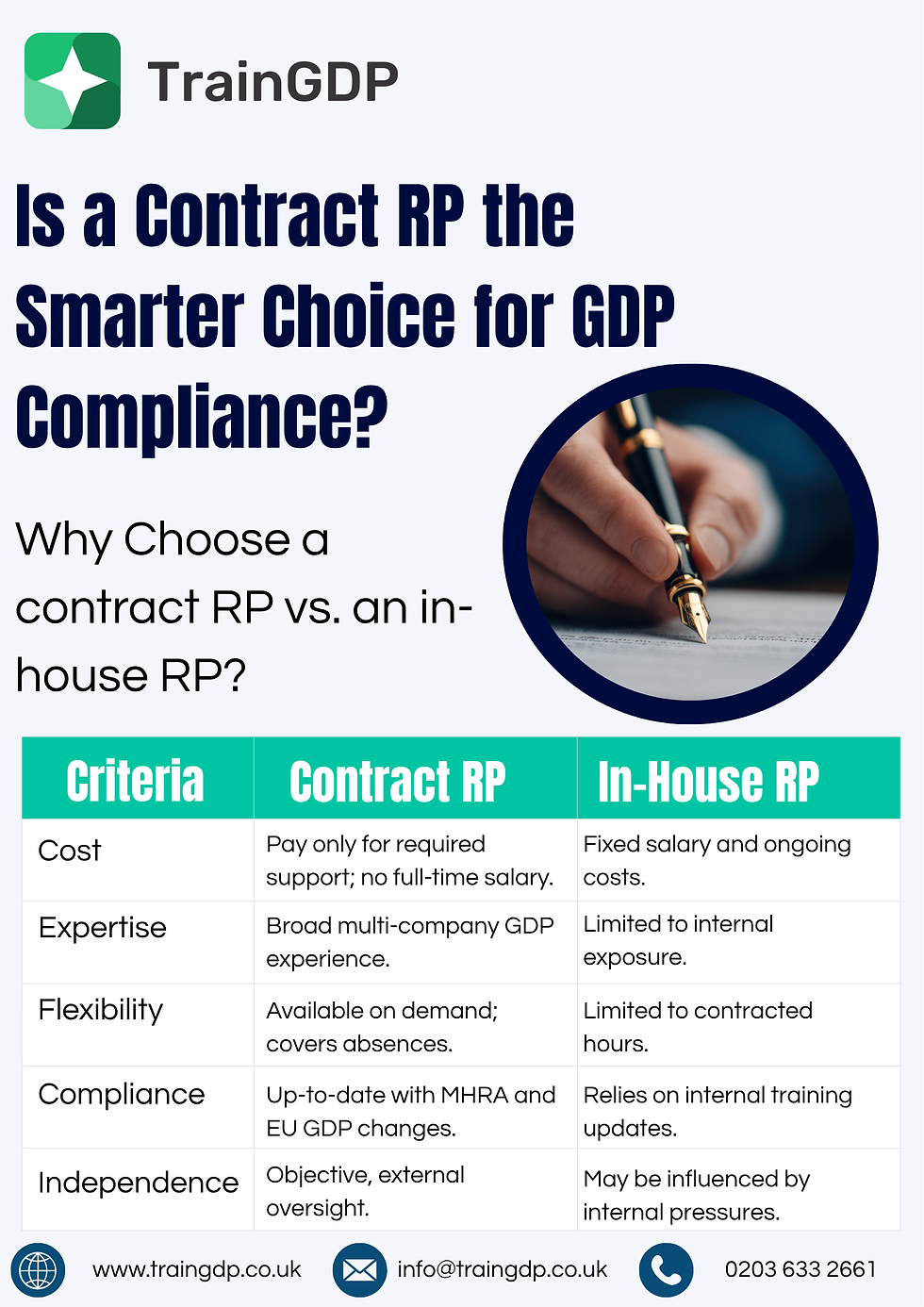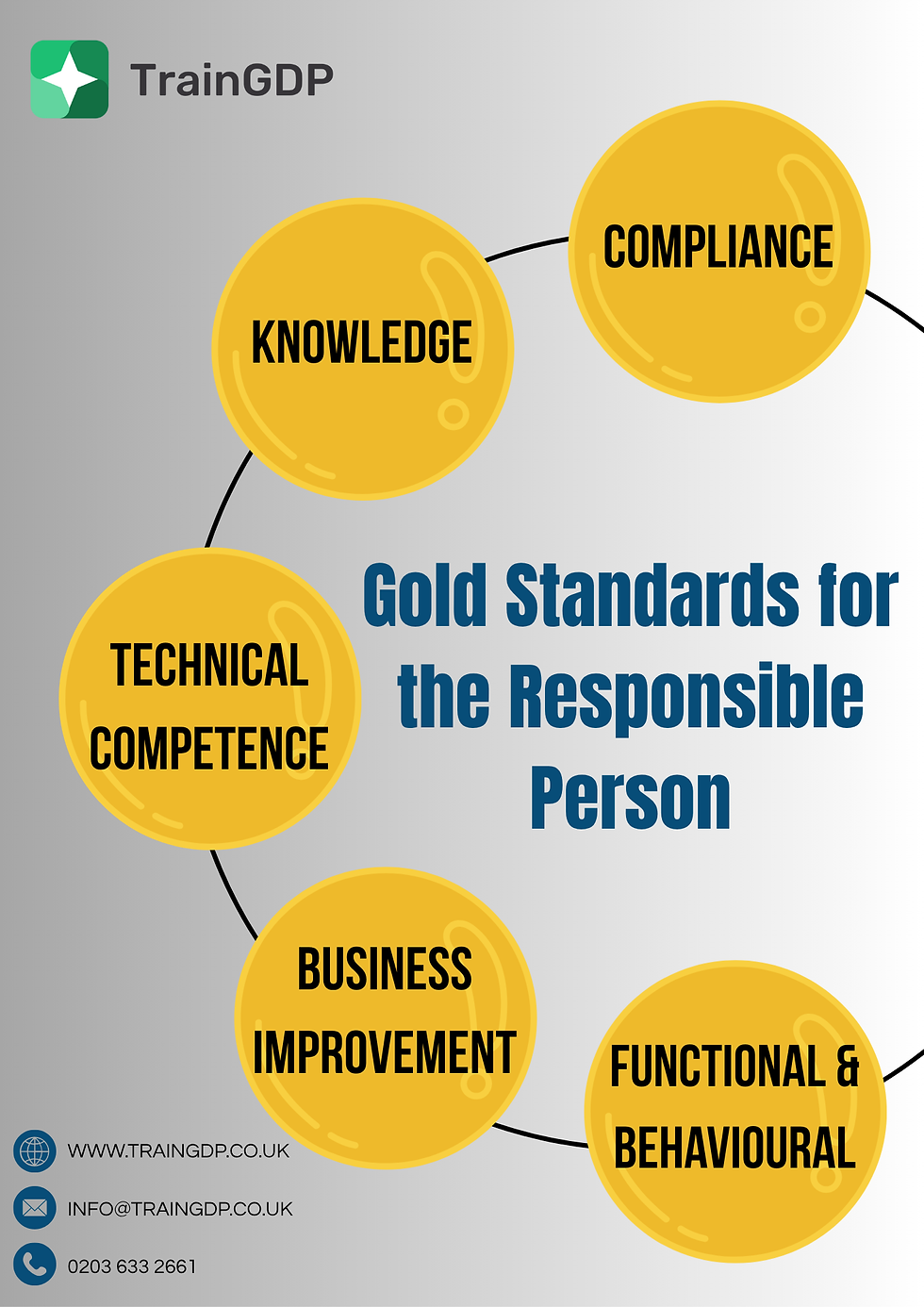Why Self-Inspection is a Game-Changer in Good Distribution Practice (GDP)
- Dilshad Moulana
- Jul 4
- 2 min read

In the world of pharmaceuticals, quality isn’t just a goal—it’s a responsibility. Medicines travel a long journey from manufacturer to patient, and every step must be carefully controlled.
That’s where Good Distribution Practice (GDP)comes in. But how do companies make sure they’re sticking to the rules? One powerful answer: self-inspection.
Let’s break down what self-inspection really means and why it’s a game-changer for anyone involved in pharmaceutical distribution.
What is Self-Inspection, Anyway?
Self-inspection is exactly what it sounds like—your company taking a long, hard look at itself. It’s a formal review of how well you're following GDP guidelines. Think of it like an internal audit, but with a proactive, improvement-focused mindset.
The goal? Catch problems before they catch you.
Why It Matters
Pharmaceuticals are sensitive products. If they're stored incorrectly, transported in the wrong conditions, or mishandled, the consequences can be serious—even life-threatening. That’s why regulators like the Medicines and Healthcare products Regulatory Agency (MHRA) require companies to conduct self-inspections regularly.
But it’s not just about ticking regulatory boxes. Done right, self-inspection can:
Reveal inefficiencies in your processes.
Highlight training needs.
Strengthen your overall quality system.
Prepare you for external audits.
What Does a Self-Inspection Look Like?
A solid self-inspection should cover all the critical aspects of your distribution process. This includes:
Are your staff properly trained?
Are storage and transportation conditions monitored?
Is documentation complete and accurate?
How are complaints, returns, and recalls handled?
Usually, companies will:
Plan the inspection (identify what, when, and who).
Use a checklist based on GDP principles.
Interview staff and observe procedures.
Write a report summarising findings.
Follow up with corrective and preventive actions (CAPA).
Making Self-Inspections Work for You
Let’s face it: no one enjoys being inspected—even by themselves. But here’s how to turn self-inspection from a chore into a powerful quality tool:
Be Objective
Avoid inspecting your own work. Rotate team members or bring in staff from another department.
Keep it Risk-Based
Focus more attention on high-risk areas. Not every issue is equally important.
Act on What You Find
Inspection is only half the job. Following through with CAPA and measuring results is what drives real improvement.
Make it a Learning Experience
Use findings to improve training, update SOPs, and encourage open communication across teams.
Final Thoughts
In the high-stakes world of pharma distribution, self-inspection isn’t just a regulatory requirement—it’s a smart, strategic move. It helps you stay compliant, improve performance, and most importantly, ensure that patients receive safe, effective medicines.
So next time you plan a self-inspection, don’t think of it as just another task. Think of it as an opportunity—to protect your business, your reputation, and the people who rely on the products you handle.
At trainGDP, we can provide a one-day comprehensive audit of your site and Quality Management System. We ensure compliance with GDP and regulatory provisions under WDA(H). Additionally, we also provide detailed gap analysis reports for QMS improvements and offer remediation plans for any identified gaps.
Get in touch for a free 60-minute consultation.




Comments